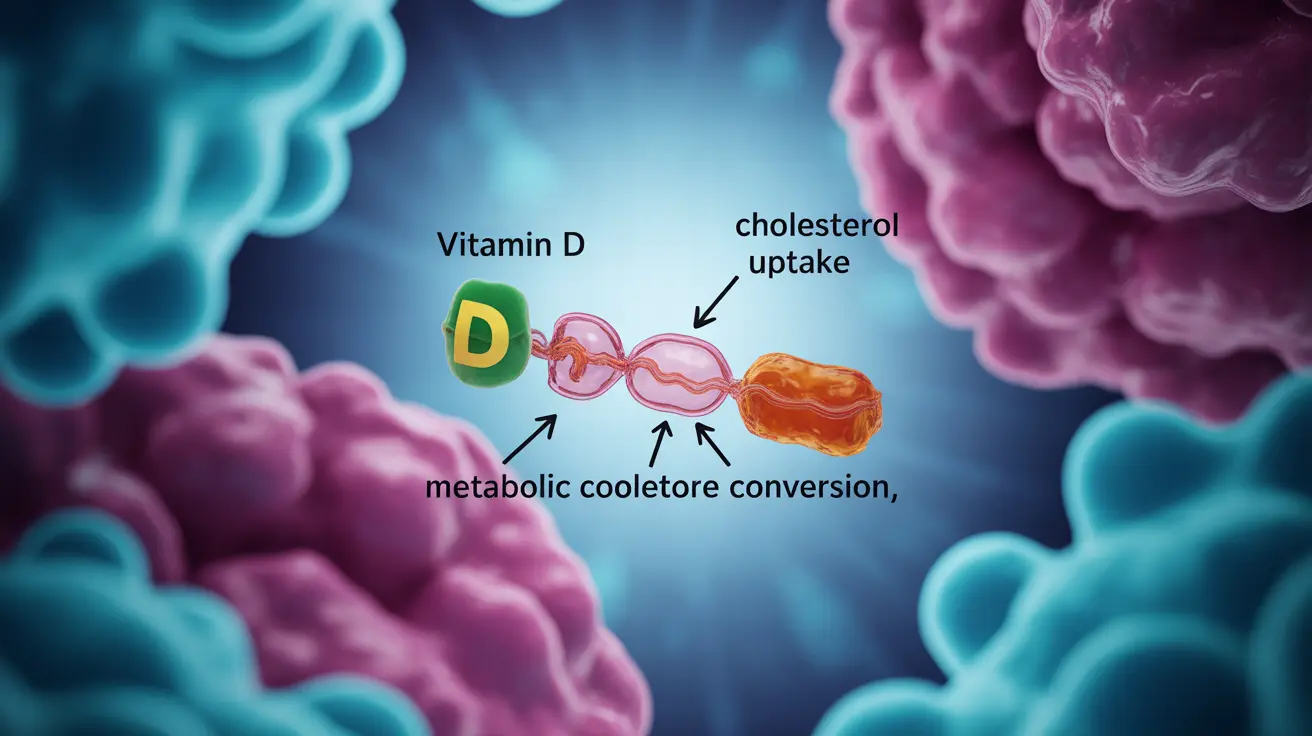Understanding the relationship between vitamin D levels and cholesterol has become increasingly important in modern healthcare. Recent research suggests that these two vital components of our health may be more closely connected than previously thought. This comprehensive guide explores how vitamin D deficiency might impact your cholesterol levels and what you can do about it.
How Vitamin D Affects Cholesterol Metabolism
Vitamin D plays a crucial role in various bodily functions, including cholesterol metabolism. This fat-soluble vitamin helps regulate how our bodies process and utilize cholesterol. Research indicates that adequate vitamin D levels may help maintain healthy cholesterol levels by influencing how the body absorbs and processes fats.
The Scientific Connection
Studies have shown that vitamin D receptors are present in many cells involved in cholesterol metabolism. When vitamin D levels are low, it may affect how effectively these cells process and manage cholesterol, potentially contributing to elevated levels. Additionally, vitamin D helps reduce inflammation throughout the body, which can impact cholesterol regulation.
Gender Differences in Vitamin D and Cholesterol Relationships
Research suggests that the impact of vitamin D deficiency on cholesterol levels may vary between men and women. Hormonal differences and body composition can influence how each gender responds to both vitamin D supplementation and cholesterol management. Women, particularly post-menopause, may be more susceptible to the combined effects of low vitamin D and high cholesterol.
Identifying the Signs and Risk Factors
Common Symptoms
While neither condition typically shows obvious symptoms early on, some signs might indicate the presence of both low vitamin D and high cholesterol:
- Fatigue and weakness
- Bone and muscle pain
- Depression or mood changes
- Difficulty maintaining healthy weight
- Increased susceptibility to infections
Risk Factors
Several factors can increase your risk of developing both conditions:
- Limited sun exposure
- Obesity
- Sedentary lifestyle
- Poor dietary habits
- Age (risk increases with age)
- Certain medications
Managing Both Conditions Effectively
Lifestyle Modifications
A comprehensive approach to managing both low vitamin D and high cholesterol includes:
- Regular outdoor activity (with appropriate sun protection)
- Balanced diet rich in vitamin D and heart-healthy foods
- Regular exercise
- Maintaining a healthy weight
- Stress management
Supplementation and Treatment
Working with healthcare providers is crucial for developing an effective treatment plan. This may include vitamin D supplementation, cholesterol-lowering medications if necessary, and regular monitoring of both vitamin D and cholesterol levels.
Frequently Asked Questions
Can low vitamin D levels cause high cholesterol, and does this affect men and women differently? While low vitamin D levels have been associated with higher cholesterol levels, the relationship may vary between genders due to hormonal differences and body composition. Women, especially after menopause, might be more susceptible to this connection.
Will taking vitamin D supplements help lower my cholesterol if it's too high? Vitamin D supplementation alone may not directly lower cholesterol levels, but addressing vitamin D deficiency as part of a comprehensive treatment plan may help support healthy cholesterol metabolism. Always consult healthcare providers before starting any supplementation.
What are the symptoms of having both low vitamin D and high cholesterol, and how do I know if I might have this combination? Both conditions often develop without obvious symptoms. Regular blood tests are the most reliable way to diagnose these conditions. However, fatigue, muscle weakness, and bone pain might indicate low vitamin D levels.
How do I safely increase my vitamin D levels if I have high cholesterol, and what lifestyle changes are recommended? Safe ways to increase vitamin D include moderate sun exposure, consuming vitamin D-rich foods, and supplementation under medical supervision. Combine this with regular exercise, a heart-healthy diet, and stress management.
Are people with obesity or those who get little sun exposure more likely to have both low vitamin D and high cholesterol? Yes, both obesity and limited sun exposure are significant risk factors for developing low vitamin D levels and high cholesterol. Body fat can store vitamin D, making it less available for use, while limited sun exposure reduces natural vitamin D production.




